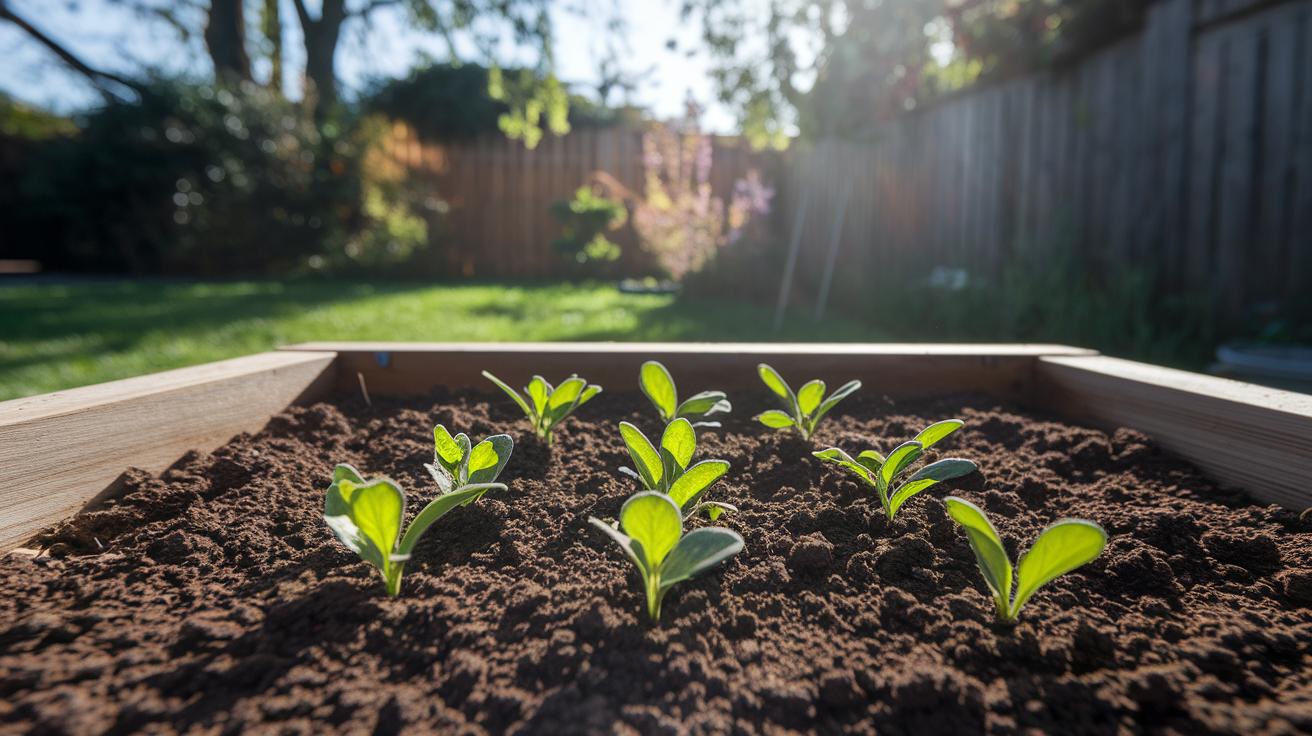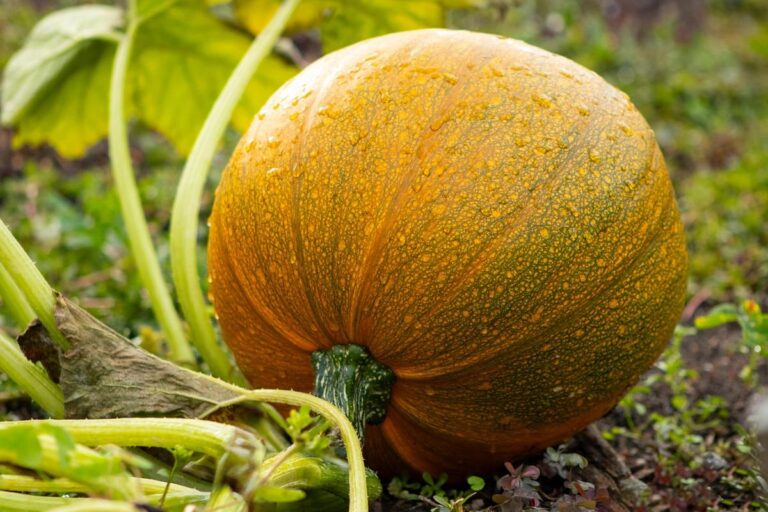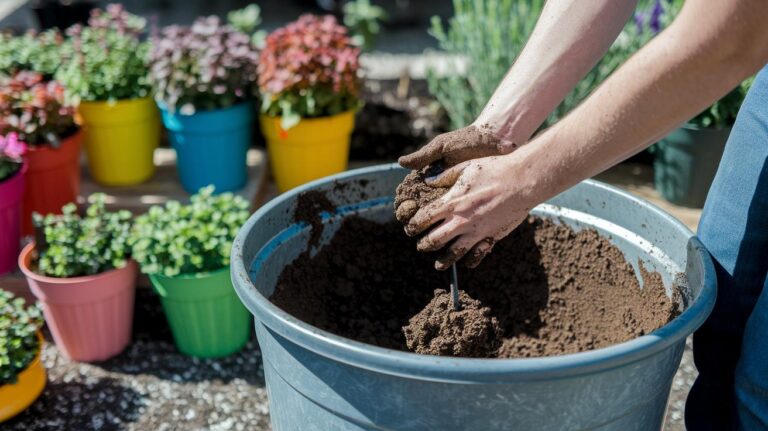Best Soil for Vegetable Garden Raised Bed Guaranteed
Ever felt like your raised bed veggies are droopy no matter how much you water them?
I used to stand there with my watering can, drenching every leaf, only to see droopy lettuce a few days later.
You know that nagging feeling? It made me wonder what I was missing.
Surprise, it wasn’t the water.
It was the soil where those seeds take root.
Think of your soil like a sponge. Moisten it, squeeze out extra water, then fluff it before planting.
Here’s a simple recipe for happy soil!
Use one part topsoil (rich upper layer of dirt).
Use one part compost (decayed organic matter that feeds plants).
Use one part coconut coir (coconut husk fiber that soaks up water).
Mix them until the blend feels light and crumbly between your fingers.
Plant your seeds in this blend and you’ll see the difference.
Roots will dive in easy.
You’ll feel the warm earth crumbling between your fingers as you press in seedlings.
By the way, my cat loves to nap on this fluffy bed, garden trophy approved.
Best Soil for Vegetable Garden Raised Bed Guaranteed
Here’s a no-fuss recipe for fluffy, rich dirt that keeps your veggies comfy all season. It’s super easy, three parts that mix up into a perfect bed of crumbles.
Think of your soil like a sponge: add a little water, give it a squeeze, then fluff it so air and moisture hang out together. When you pinch a handful, it feels like warm earth crumbling between your fingers, yet holds enough water so your plants don’t go thirsty.
- one-third topsoil (nutrient-rich upper layer of dirt)
- one-third compost (decayed organic matter that enriches soil)
- one-third peat moss or coconut coir (coconut husk fiber that soaks up moisture)
Um, my garden cat treats fresh soil like her personal sandbox. Back to prepping your bed…
Aim for a pH of 6.0 to 7.0 (soil acidity level plants prefer). DIY mixes cost about $3–$10 per cubic foot. If you’d rather grab a ready-made blend, expect $30–$50 per cubic foot. But check in with your local garden center, you might land a bulk discount. Then plant away!
Soil Texture and Particle-Size Balance for Raised Beds
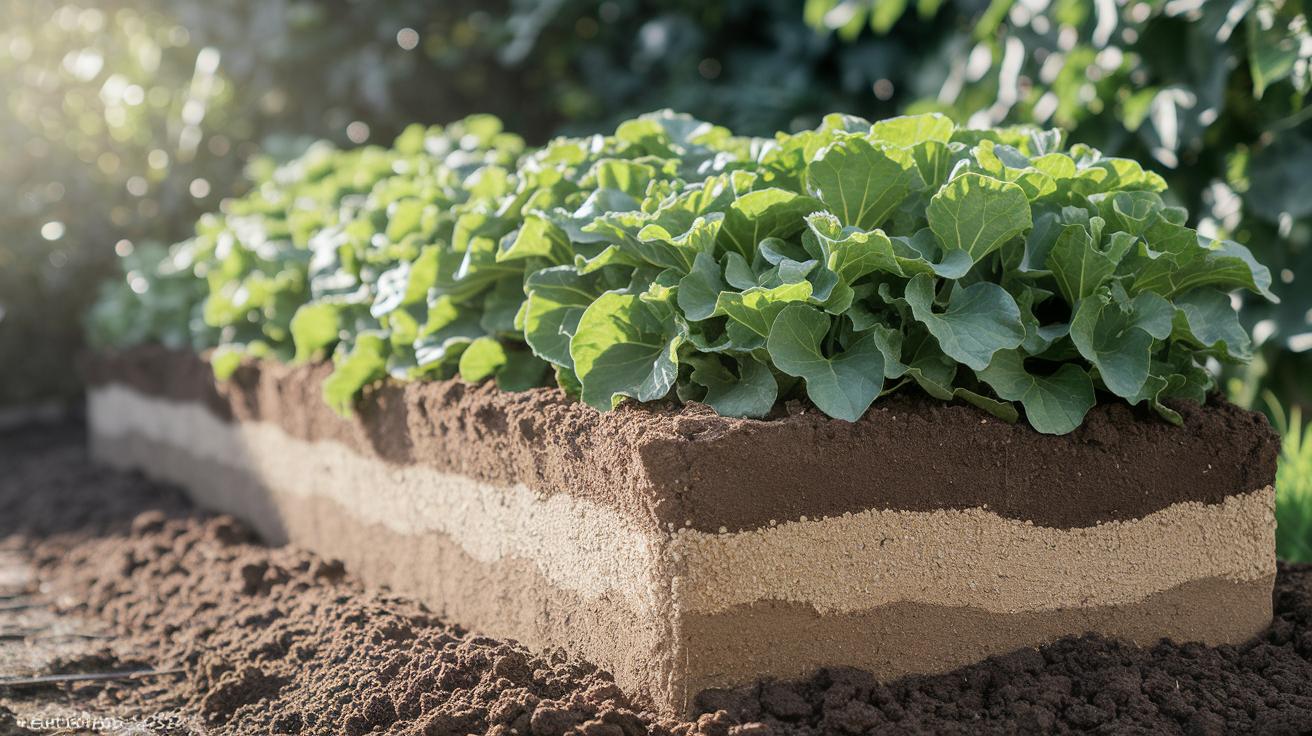
Think of loam as the perfect garden hug for your raised bed. It’s about 40% sand, 40% silt (tiny rock particles that feel silky), and 20% clay (fine, sticky soil bits). This mix holds just enough water without turning into mud and gives roots cozy air pockets to stretch and find nutrients. Have you ever felt the warm earth crumbling between your fingers? That sweet spot in loam means healthier plants and fewer water worries.
| Texture Category | Sand (%) | Silt (%) | Clay (%) | Aggregate Stability | Drainage Rate |
|---|---|---|---|---|---|
| Loam | 40 | 40 | 20 | Medium-High | Moderate |
| Sandy Loam | 60 | 30 | 10 | Low | Fast |
| Clay Loam | 30 | 40 | 30 | High | Slow |
You can tweak your mix like a recipe. Stir in perlite (those little white bits of volcanic glass that boost air pockets) if things feel too dense. Fold in vermiculite (flaky mineral that soaks up water) to keep the mix moist just right. If your handful feels gritty and water zips through, add a scoop of clay-rich topsoil. And if it’s too sticky, sprinkle in coarse sand until water seeps at a gentle pace.
pH Management and Testing for Raised Bed Vegetable Soil
Most veggies thrive when the soil pH (a measure of acidity or alkalinity) sits between 6.0 and 7.0. Below 6.0 your garden soil turns too tart and iron or phosphorus can lock up in the earth. Above 7.0 it swings too basic and other nutrients hide from your veggies. Keeping that middle range helps roots soak up all the good stuff and keeps leafy greens crisp. Yes!
Testing pH is step one. It’s as easy as scooping a handful of dark, crumbly dirt (oops I dropped a clump) and mixing it with water. Then you match the mix to colors on your kit’s chart. You can grab a soil pH testing kit at a plant nursery or send a sample to a lab for a deeper look.
By the way, my cat loves sunning on the raised bed.
If your soil feels too sour, sprinkle dolomitic lime (limestone with calcium and magnesium) at the rate on the bag and gently work it in. If it leans toward alkaline, add elemental sulfur (a yellow powder that makes soil more acid) to pull pH down. After you tweak pH, feed your bed a balanced NPK fertilizer (has nitrogen, phosphorus, and potassium) to refill nutrients. Wait a couple weeks, water deeply, then test again so your veggies keep smiling.
Organic Amendments and Mineral Supplements for Rich Raised Bed Soil
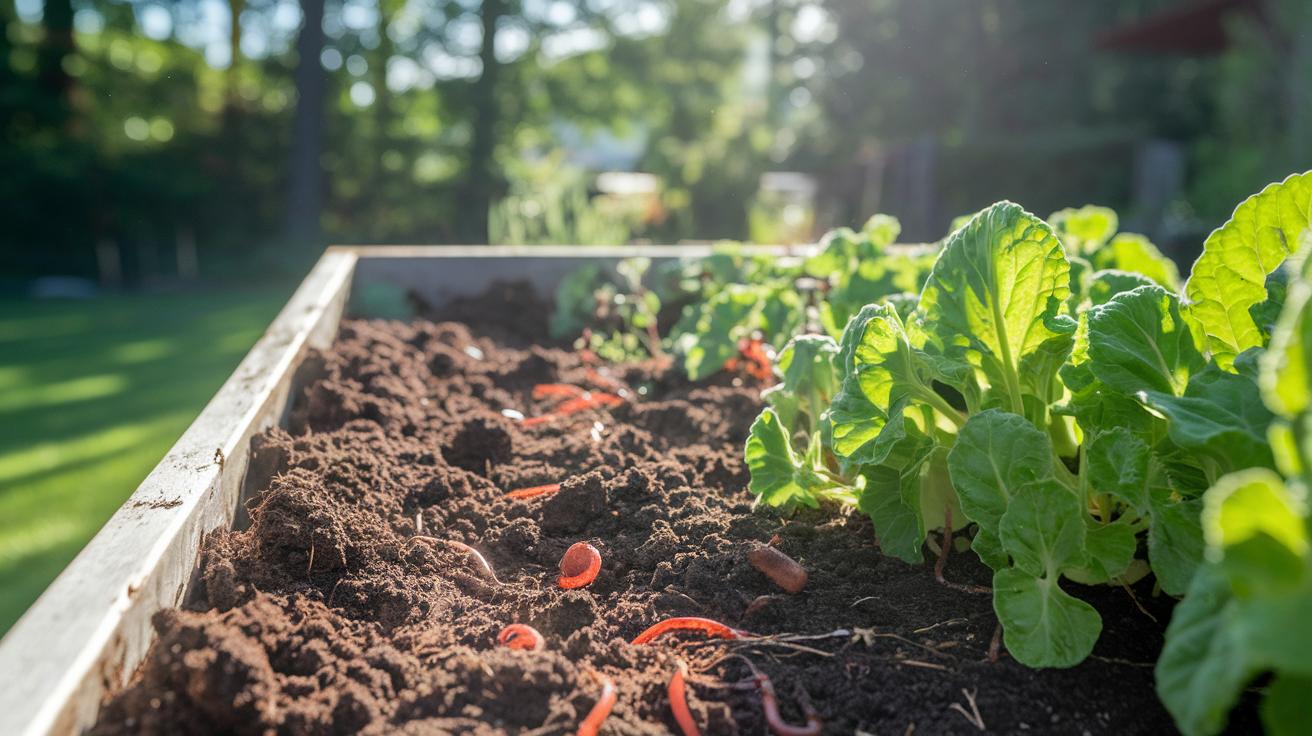
Have you ever dug into a raised bed and smelled that fresh, earthy scent? Mixing organic stuff (like compost) with the right minerals makes your soil soft to the touch and packed with food for your plants.
Start with aged compost (plant bits that broke down and feed soil life) and worm castings (worms’ rich leftovers full of nutrients and tiny helpers). And I’ll admit, I sometimes spill a scoop or two, oops. Stir them in until the dirt crumbles between your fingers. You’ll even spot earthworms wriggling, a sure sign the soil is alive.
When you plant, sprinkle bone meal (ground bones rich in phosphorus for strong roots). It kicks in fast so seedlings send roots down instead of up. Then fold in rock phosphate (stone pieces that slowly release phosphorus) for a season-long snack.
Next, cover the trace elements. Add green sand (glauconite sand with iron and potassium) and kelp meal (dried seaweed powder with iodine and magnesium). They fill the tiny gaps compost can’t reach. Finally, toss in microbial inoculants (friendly bacteria) and mycorrhizal fungi (tiny fungi that link to roots). These underground buddies boost water uptake, keep some pests away, and give each seedling a warm hello under the soil.
DIY vs. Commercial Raised Bed Soil Mixes and Pricing
If you’re buying soil in bulk, give your local landscape supplier a call. Ask about yardage (a cubic yard is about 27 cubic feet) discounts or end-of-season deals. Measure your raised bed’s length, width, and depth so you order just enough soil mix. Getting those numbers right means less waste and more gardening fun.
And here’s a trick: rent a small trailer or team up with a neighbor for a shared delivery. Hauling a heavy, earthy soil mix feels way easier when you’re not doing it solo. By the way, my friend and I split a load last spring, saved money and swapped gardening stories the whole time. Back to prepping your garden…
Troubleshooting Common Raised Bed Soil Problems

Even the dreamiest raised bed can hit three common snags: packed dirt that stifles roots, soggy spots that welcome rot, and soil that’s run out of nutrients or harbors sneaky pathogens. Catching these hiccups early means you can save your veggies before they sulk away. Ready to dig in?
When the soil feels like a brick under your fingers, it’s time for soil aeration (making space for air). Toss in handfuls of perlite (tiny volcanic rocks that add air pockets) and give your bed a gentle fork-over every few weeks. Make sure your bed is at least eight inches tall and has evenly spaced drainage holes so water doesn’t pool and wash away tiny roots.
After a season or two, your bed might look drained. That’s nutrient depletion – when soil runs low on good stuff. Rotate crops so heavy feeders like tomatoes don’t hog the same spot twice. Then side-dress with aged compost (decayed organic matter that feeds soil) or a balanced organic fertilizer midseason.
Consistent moisture keeps roots happy. I use a moisture probe or tensiometer (a tool that reads water levels) to know exactly when to water.
Sometimes the worst trouble is invisible. Soil borne diseases and tiny pests can sneak in last. Solarization is a neat trick: drape clear plastic over damp beds on a hot, sunny day to heat the soil and zap germs. Then introduce beneficial nematodes (tiny worm allies) to patrol below the surface and gobble up unwanted larvae.
Step-by-Step Preparation and Filling of Raised Vegetable Beds
-
Grab gloves and a rake. Pull out any pebbles, stubborn roots, and those sneaky weeds. Rake until the soil feels smooth under your fingers. That warm, fresh earth is like a blank canvas for your veggies.
-
For a no dig bed prep (layering organic material on top), spread a thick layer of sheet compost (decayed organic matter that enriches soil) across the surface like a cozy blanket that breaks down right where it sits. Or try double digging (lifting subsoil and flipping topsoil): use a spade to loosen the deeper layer subsoil (lower layer of soil), then turn over the topsoil (upper layer rich in nutrients). Your roots will love the extra room to dive deep.
-
Time to mix your soil from scratch. In a wheelbarrow, add topsoil, aged compost (decayed organic matter that enriches soil), and coconut coir (shredded coconut fiber that holds water). Stir with a shovel. Grab a handful, if it crumbles but sticks together when squeezed, you nailed it. Fluffy soil packed with plant food.
-
Fill the bed with your mix until it’s about 12 to 18 inches deep. Picture your vegetable garden layout as you go. Keep paths clear and hoses in reach. By the way, my tabby loves sunning on the edge of my raised bed. Back to filling, it’s key to spread soil evenly for strong root growth.
-
Give the bed a gentle drink: pour in 1 to 2 inches of water so the soil settles. Let it rest for 3 to 7 days while it firms up. Then hook up drip or soaker hoses and water once a week. Stick a moisture probe (tool for testing soil wetness) in the soil now and then to make sure it’s just right.
Final Words
Mixing one-third topsoil, compost, and coir gives your beds a rich base.
Fine-tuning sand, silt, and clay crafts loam that drains and holds water. Testing pH keeps nutrients balanced.
Then add bone meal, worm castings, and beneficial fungi for extra boost. DIY blends or bagged mixes suit any wallet.
Follow simple prep steps, watch moisture, and tackle compaction or pests as they appear. You’ll soon be harvesting fresh produce with the best soil for vegetable garden raised bed and loving every bite.
FAQ
What is the ideal soil mix for raised bed vegetable gardens?
The ideal soil mix blends one third quality topsoil, one third aged compost, and one third peat moss or coconut coir. Aim for pH 6.0–7.0. DIY costs run about $3–10 per cubic foot.
How do I balance soil texture in a raised bed?
Balancing soil texture means aiming for loam with about 40% sand, 40% silt, and 20% clay. Use perlite, vermiculite, sand, or clay to adjust drainage and moisture retention for healthy roots.
How do I test and adjust soil pH in raised beds?
Testing soil pH uses at-home kits or lab services to measure acid or alkali levels. Vegetables favor pH between 6.0 and 7.0. Raise pH with dolomitic lime or lower it with elemental sulfur, then retest.
Which organic amendments should I add to raised bed soil?
Adding organic amendments like aged compost and worm castings boosts nutrients and microbes. Bone meal and rock phosphate supply long-term phosphorus, while green sand, kelp meal, and mycorrhizal fungi enrich minerals and root health.
Should I use DIY or commercial raised bed soil mixes?
Choosing DIY or commercial mixes depends on bed size and budget. Pre-mixed soils offer convenience at $30–50 per cubic foot. DIY blends of bulk topsoil and compost cost about $3–10 per cubic foot for large beds.
How can I fix common raised bed soil problems?
Solving raised bed soil problems means loosening compacted areas with perlite and looseners. Improve drainage by keeping proper bed height and hole placement. Rotate crops and side-dress to restore nutrients. Solarize soil or add beneficial nematodes to reduce pathogens.
What are the steps to prepare and fill a raised vegetable bed?
Begin by clearing debris and weeds, then choose no-dig or double-dig method. Blend your topsoil, compost, and coir mix, fill beds to 12–18 inches, moisten and let settle for a few days, then install drip or soaker hoses.

